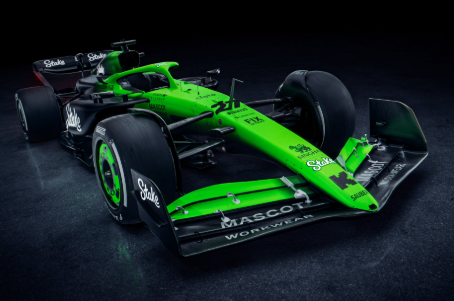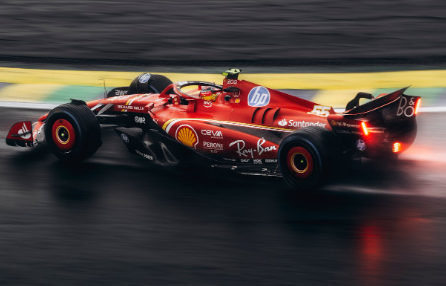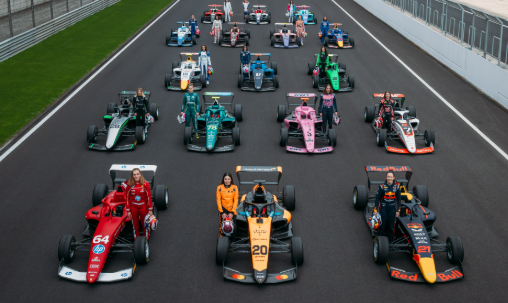Formula 1. The mere mention of those two characters—F1—
conjures up images of screaming engines, shimmering carbon fiber, and a symphony of speed and ambition. No other sport combines cutting-edge technology, enormous budgets, and raw human courage quite like F1 does. Over more than seven decades, Formula 1 has evolved from a niche pastime of daring pioneers into a global phenomenon watched by hundreds of millions.

Table of Contents
But while its brilliance is undeniable, F1 is not without controversy. For every tale of triumph and innovation, there are stories of excess, inequality, and tragedy. In this post, we’ll dive deep into the world of Formula 1, exploring the qualities that make it extraordinary—and the criticisms that refuse to fade.
The Positive Side: What Makes F1 Unmatched

1. Technological Innovation
F1 cars are the most sophisticated racing machines ever built. Every component is optimized to an almost absurd degree. The materials—carbon fiber composites, exotic alloys—push the boundaries of engineering.
Hybrid power units generate over 1,000 horsepower while achieving remarkable efficiency. Advanced aerodynamics allow cars to corner at speeds that would terrify even seasoned drivers. And software—data acquisition systems, energy recovery algorithms, and predictive modeling—creates a digital brain that guides every lap.
Much of this innovation eventually trickles down to everyday vehicles. Technologies like disc brakes, semi-automatic gearboxes, active suspension, and hybrid systems were pioneered in F1 before entering road cars.
2. Human Skill and Courage
Machines are nothing without the humans who tame them. F1 drivers are among the fittest athletes in the world. They withstand lateral forces exceeding 5g, maintain laser focus for two hours, and make split-second decisions at over 300 kph.
Legends such as Ayrton Senna, Michael Schumacher, and Lewis Hamilton transcended the sport through extraordinary skill. Watching a qualifying lap on the absolute limit is a reminder that F1 is as much about artistry as it is about engineering.
3. Global Reach and Cultural Impact
F1 is truly international, visiting over 20 countries every season—from the neon skyline of Singapore to the historic streets of Monaco. Each Grand Prix carries its own atmosphere and traditions.
The sport brings nations together in a shared celebration of speed and competition. Generations of fans have grown up watching their heroes race through iconic circuits—Silverstone, Monza, and Suzuka. For many, the yearly calendar becomes a rhythm of life.
4. Sustainability and Forward-Thinking
Critics often label F1 as wasteful, but the sport has made major strides toward sustainability. Since 2014, hybrid power units have led the way in efficiency. Biofuels and synthetic fuels are on the horizon.
The ambition is clear: to become net carbon zero by 2030. F1 now sees itself not merely as entertainment but as a testbed for future mobility. That shift has sparked fresh interest and investment.
5. Entertainment and Drama
Few sports offer the drama of F1. Races can turn on the smallest details—a pit stop error, a sudden rain shower, or a safety car deployment. Title battles often go down to the wire.
Think of the epic clashes: Prost vs. Senna, Schumacher vs. Hakkinen, and Hamilton vs. Verstappen. The blend of rivalry, unpredictability, and spectacle is addictive. F1 delivers stories that captivate audiences across generations.
The Negative Side: Where F1 Falls Short

While F1’s achievements are remarkable, the sport is far from perfect. Its flaws are woven into its history, and many persist today.
1. Inequality and Financial Barriers
Perhaps the most persistent criticism of F1 is that it is a playground for the wealthy. Running an F1 team costs hundreds of millions. Even with cost caps, resource disparity is stark.
For decades, only a handful of teams—Ferrari, Mercedes, Red Bull, and McLaren—have been able to consistently fight for championships. Smaller teams like Williams and Sauber often serve as also-rans, fighting simply to survive.
2. Environmental Impact
Although sustainability efforts are underway, F1 still has a large carbon footprint. Transporting equipment, building infrastructure, and staging events across the globe consume vast resources.
Some argue that this spectacle is incompatible with climate consciousness. Others counter that F1’s technological advances can help reduce emissions worldwide. This debate continues to divide fans and critics.
3. Safety Risks
F1 has become exponentially safer, thanks to innovations like the HANS device, improved barriers, and the Halo cockpit protection system.
But the sport remains dangerous. Jules Bianchi’s tragic accident in 2014 was a stark reminder of motorsport’s inherent risks. Drivers willingly accept danger, but any fatality casts a long shadow over the paddock.
4. Political and Ethical Controversies
F1’s global reach means it often races in countries accused of human rights abuses or political repression. Hosting Grands Prix in such nations raises ethical questions about “sportswashing,” where regimes use prestigious events to polish their image.
The sport has also faced scrutiny over opaque governance and internal power struggles. Recent years have seen high-profile controversies, such as the 2021 Abu Dhabi title decider, which damaged the sport’s credibility.
5. Elitism and Accessibility
While F1 has grown in popularity, it still struggles to be accessible. Tickets are expensive, merchandise is costly, and coverage often requires subscriptions.
For aspiring drivers, the costs of junior categories are prohibitive. This creates a talent pipeline dominated by those with financial backing rather than pure skill. Efforts to promote diversity and inclusion are ongoing but have yet to fully level the playing field.
The Balance of Contradictions
These positives and negatives make F1 a fascinating study in contradictions:
- A sport that simultaneously innovates and consumes.
- A showcase of human excellence and systemic inequality.
- A unifying global spectacle that can also be an elitist enclave.
Perhaps this complexity is part of F1’s allure. It is never simple or tidy. It mirrors the ambitions, flaws, and aspirations of the people who create it.
The Emotional Connection
Ask any F1 fan why they love the sport, and you’ll hear stories of childhood memories, favorite drivers, or unforgettable moments. A father and daughter waking up at dawn to watch Suzuka. A teenager discovering Senna’s legacy on YouTube. A fan traveling thousands of miles to see their first live Grand Prix.
This passion is what sustains F1 through its controversies. Despite everything, the thrill of the race remains undimmed. When the lights go out on Sunday afternoon, the world holds its breath.
The Future: Where Does F1 Go From Here?
Looking forward, F1 faces crucial questions:
- Can it balance entertainment with fairness?
- Will it lead the charge toward sustainable motorsport?
- Can it make the sport more accessible and inclusive?
New regulations, technological shifts, and cultural transformations are underway. Liberty Media’s stewardship has modernized marketing and social media presence. Netflix’s “Drive to Survive” has brought millions of new fans into the fold.
Yet maintaining authenticity while growing the audience is no easy task. The coming decade may define whether F1 continues to lead or loses relevance in a rapidly changing world.
Conclusion: A Love Letter—and a Challenge
F1 is the pinnacle of motorsport because it embodies the heights of human achievement. It showcases brilliance, grit, and ambition in their purest forms.
But it also reflects human failings—greed, inequality, and shortsightedness.
If you are a fan, you learn to live with this tension. You can love the sport fiercely while still holding it accountable.
In the end, F1 endures because it offers something no other sport can: the sight of drivers and machines reaching for perfection. For a few transcendent moments, when a driver nails a qualifying lap or carves through traffic with impossible precision, everything else fades away.
The politics, the controversies, the costs—they vanish. All that remains is a blur of speed, a testament to the unquenchable human drive to go faster, higher, and better.
That is why F1 matters. That is why, even in the face of its flaws, millions of us keep watching, year after year.


